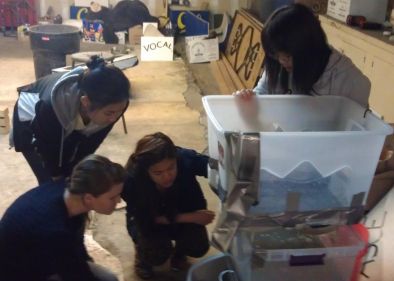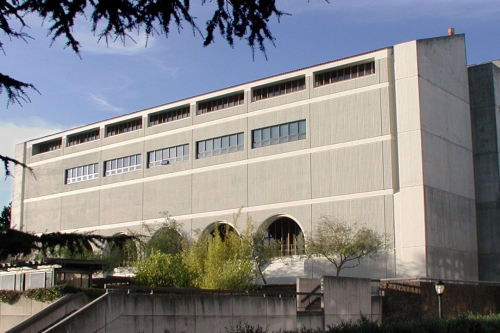It’s March and Mid-Pac is in April.
That sentence tells you everything about what is going on with the student competition teams right now (busy!).
The Environmental Team (CalEnviro) is putting finishing touches on its design of a water treatment system, christened ExcaliBEAR. Their technical report is due March 15, one month before the ASCE Mid-Pacific Regional Conference (Mid-Pac), that will take place on April 20 at San Jose State University.
ExcaliBEAR must treat mock dirty water (a combination of pine needles, yogurt, flour, Dawn dish soap, tissue paper, plus other things) to the point where the water could be safely released back into the environment. The system needs to be constructed from everyday materials that could be found in a hardware store. It should be cheap, durable, and reusable.
Team members will collect the materials to be used in the system. All materials must fit into a space equal to a flatbed of a truck. They will transport the materials to SJSU and build the treatment system right there. The spontaneity of having to construct the system on site is a distinguishing feature of the Environmental Competition.
“For example, we will know that our system includes wood, but if the system requires a piece of wood that is 1 ft. long, it must be cut to size right there,” explains Jordan Toy, Environmental Team Project Manager.
Of course, it would be easy to build a glamorous system if a lot of materials were used, or if the materials were expensive. However, because economy is a factor on which the system is judged, teams are encouraged to choose only a few materials that are simple and cheap.

L: Team works with env. lab manager, Negassi Hadgu (far left), to test different parameters of water samples.
R: Team analyzes early ExcaliBEAR prototype.
Each year, the competition includes a twist. This year, teams need to design and affix a tap onto their system that can be turned completely on and off. Judges will use the tap to draw a sample of the water for testing.
CEE’s Environmental Team is larger than usual this year with 15-20 members. Although the team is larger than in past years, it is still small enough to allow each member the chance to make a real contribution.
When asked what he likes most about being part of the Environmental Team, Jordan says, “Our team will brainstorm the challenge. We’ll spend a lot of time going back and forth. We suggest ideas, we’ll sketch ideas, and we’ll reject ideas. Then at some point, we hit that AHA moment where we have a solution.
“We wouldn’t have a solution without that synergy. It’s like a game where you hit that moment where it all comes together. It’s the coolest feeling. “

